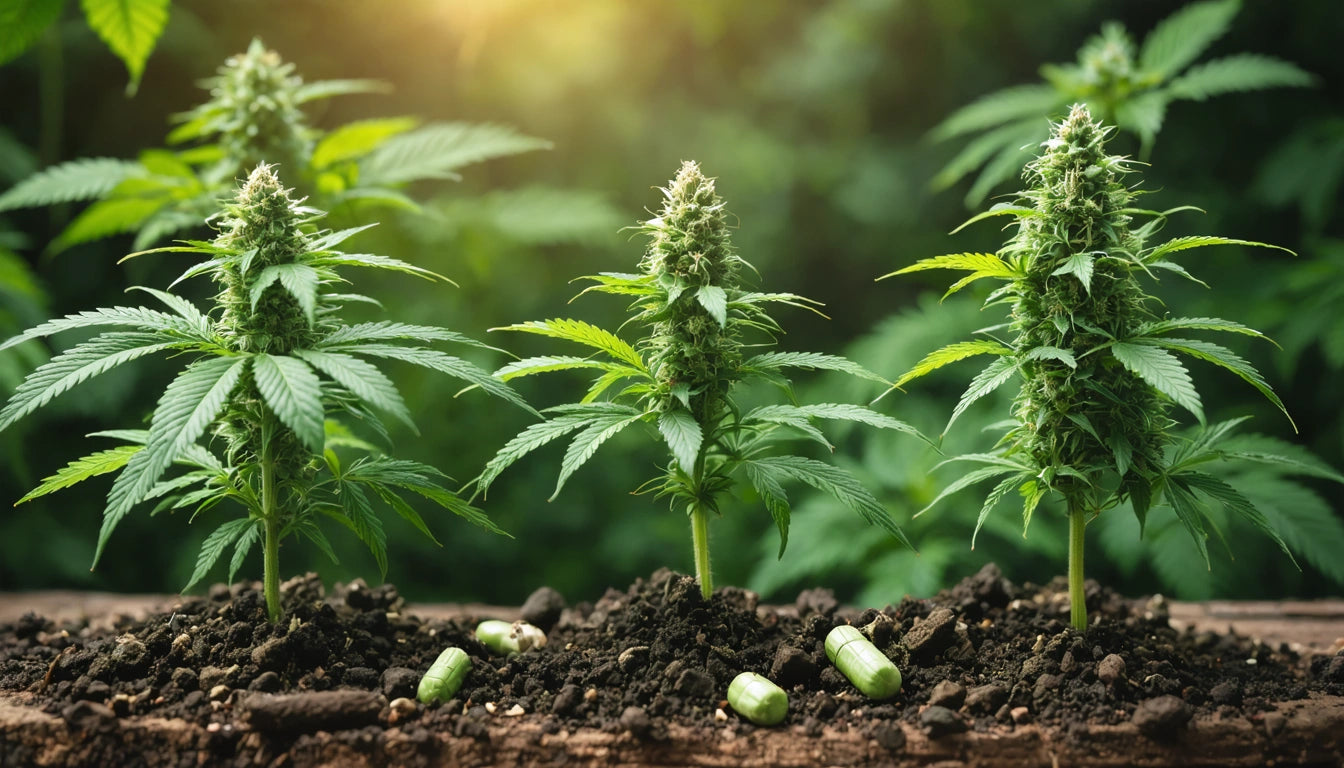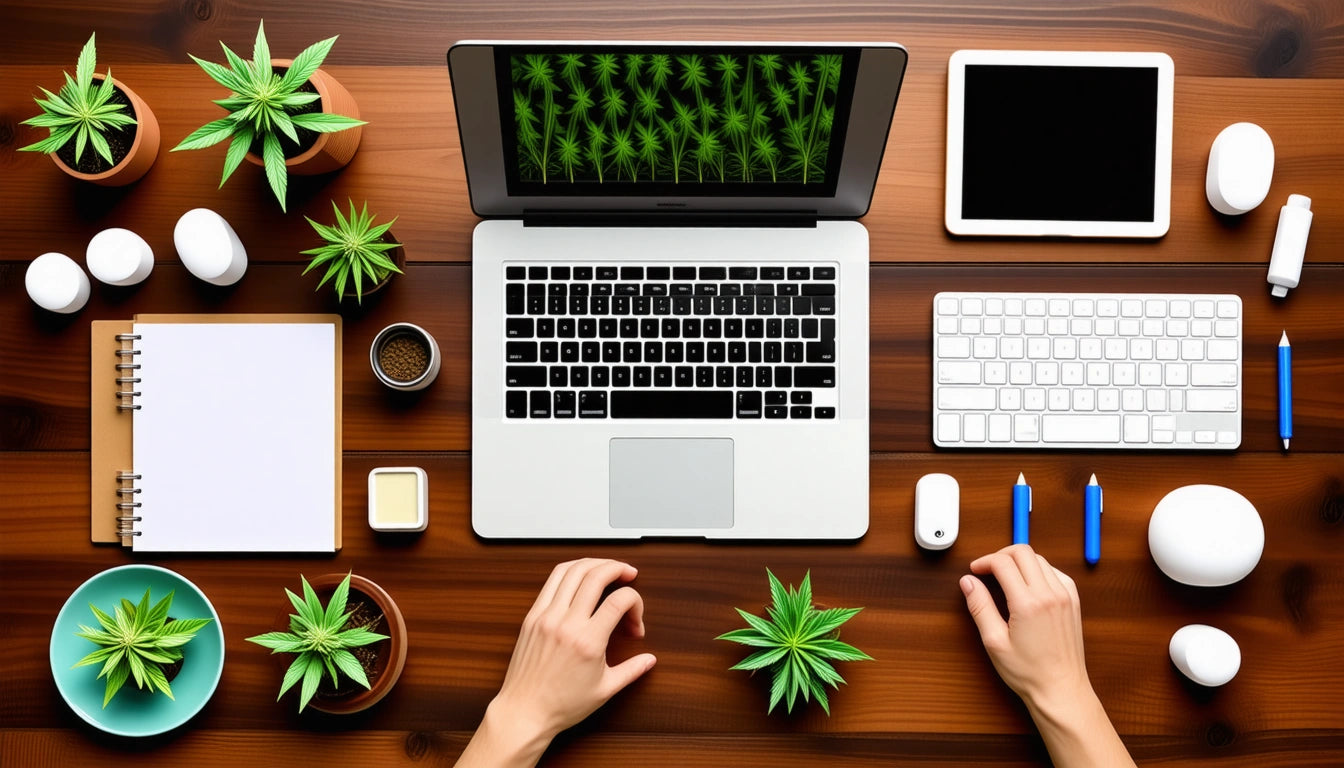Table of Contents
- Identifying Cannabis Plants: Key Visual Characteristics
- What Does a Pot Plant Look Like Through Growth Stages
- Cannabis Leaf Structure and Identification
- Plants That Look Like Pot: Avoiding Misidentification
- What Different Quantities of Marijuana Look Like
- How to Identify Male vs Female Pot Plants
- Resources for Accurate Marijuana Plant Identification
A Visual Guide to Identifying Marijuana Plants
Understanding what pot plants look like is valuable knowledge whether you're a curious observer, a gardening enthusiast, or someone working in the cannabis industry. Cannabis plants have distinctive visual characteristics that set them apart from other vegetation. This comprehensive guide will help you identify marijuana plants at various growth stages and understand their unique features.
Identifying Cannabis Plants: Key Visual Characteristics
Cannabis plants have several distinguishing features that make them recognizable. Identifying weed plants begins with understanding these key characteristics:
- Serrated leaf edges with pointed tips
- Palmate leaf structure with 5-9 leaflets (typically 7)
- Opposing leaf arrangement on stems
- Distinctive aroma, especially during flowering
- Sticky resin glands (trichomes) visible on mature plants
The cannabis plant's appearance changes dramatically throughout its lifecycle, from a small seedling to a full-grown flowering plant. Learning to recognize these stages helps with accurate identification.
What Does a Pot Plant Look Like Through Growth Stages
Seedling Stage
What does a young pot plant look like? At this earliest stage, cannabis seedlings display:
- Two rounded cotyledon leaves initially
- First true leaves with 3-5 serrated fingers
- Thin, delicate stem
- Height of 3-6 inches
During this phase, cannabis seedlings can somewhat resemble other plants, making identification more challenging without close inspection.
Vegetative Stage
As the plant matures into vegetative growth:
- Distinct fan leaves develop with 5-9 pointed leaflets
- Sturdy central stem with developing branches
- Vibrant green color (typically)
- Height ranging from 1-3 feet
This is when what a pot plant looks like becomes more distinctive and recognizable to most observers.
Flowering Stage
When a cannabis plant begins flowering, you'll notice:
- Development of buds at stem junctions
- Crystal-like trichomes coating buds and surrounding leaves
- Distinct aroma becomes more pronounced
- Potential color changes in leaves and buds
Cannabis flowering patterns provide clear visual cues for identification during this crucial stage.
Cannabis Leaf Structure and Identification
The marijuana leaf is perhaps the most iconic and recognizable part of the plant. Cannabis leaf appearance has several key identifiers:
- Palmate compound structure
- Deep serrations along leaf edges
- Typically 5-9 leaflets per leaf
- Leaflets that are longer in the middle, shorter on the sides
- Prominent veining pattern
The appearance of cannabis leaves can vary between strains. Indica-dominant strains often feature broader, darker leaves, while sativa-dominant varieties typically display narrower, lighter-colored foliage.
Plants That Look Like Pot: Avoiding Misidentification
Several plants share visual similarities with cannabis, leading to potential confusion. When wondering what plant looks like a pot plant, consider these common lookalikes:
- Japanese Maple: Has similar palmate leaves but with smoother edges
- Cassava: Features palmate leaves but with less pronounced serrations
- Cleome/Spider Flower: Has palmate leaves but different flowering structure
- Kenaf: Shows similar leaf pattern but grows differently
- Okra: Displays similar leaf structure but produces distinctive fruit
Understanding these differences helps prevent misidentification when determining what plant looks like pot in your garden or natural areas.
What Different Quantities of Marijuana Look Like
For those wondering what various amounts of processed cannabis look like, here's a visual guide:
- A gram: Approximately the size of a grape
- Eighth (3.5 grams): About the size of a kiwi fruit
- Quarter (7 grams): Roughly the size of an apple
- Half ounce (14 grams): Similar to a small orange
- Ounce (28 grams): Comparable to a coconut
When considering what does an eighth of pot look like, it's typically enough to fill a small bag or container. For proper storage and compliance, many retailers use specialized packaging designed for eighth quantities that maintain freshness while meeting regulatory requirements.
How to Identify Male vs Female Pot Plants
Distinguishing between male and female plants is crucial for cultivation. Visual differences include:
Male Plants
- Develop pollen sacs that look like small balls
- Generally taller and less bushy
- Fewer leaves around flowering sites
- Mature faster than females
Female Plants
- Produce pistils (white hair-like structures)
- Develop resin-rich buds
- More compact and bushy growth pattern
- Higher concentration of trichomes
These gender distinctions become visible during the pre-flowering stage, typically 4-6 weeks into the growth cycle.
Resources for Accurate Marijuana Plant Identification
For those seeking to learn more about what pot looks like growing or in processed form, several resources can help:
- Botanical reference guides with detailed illustrations
- Agricultural extension services in states with legal cannabis
- Online plant identification communities
- Cannabis cultivation forums with photographic references
- Educational resources from cannabis industry organizations
Understanding how cannabis appearance has evolved through selective breeding also provides context for the wide variety of visual characteristics in modern strains.
Whether you're curious about what does pot look like for educational purposes or need to identify plants for professional reasons, this visual guide provides the foundation for accurate cannabis plant identification.











Leave a comment
All comments are moderated before being published.
This site is protected by hCaptcha and the hCaptcha Privacy Policy and Terms of Service apply.